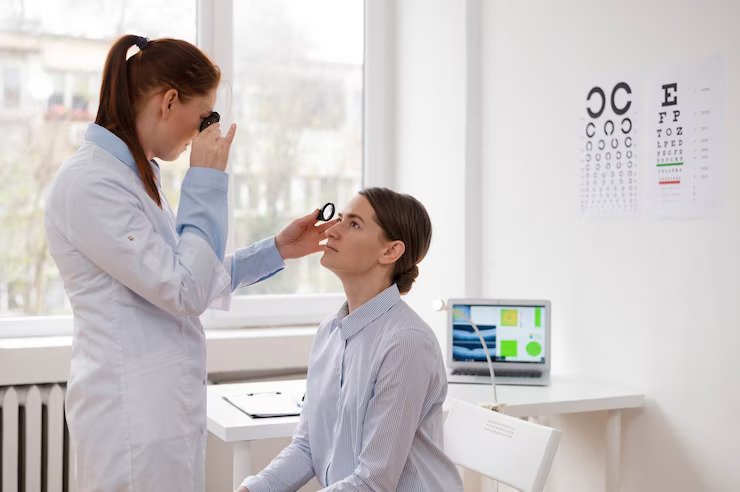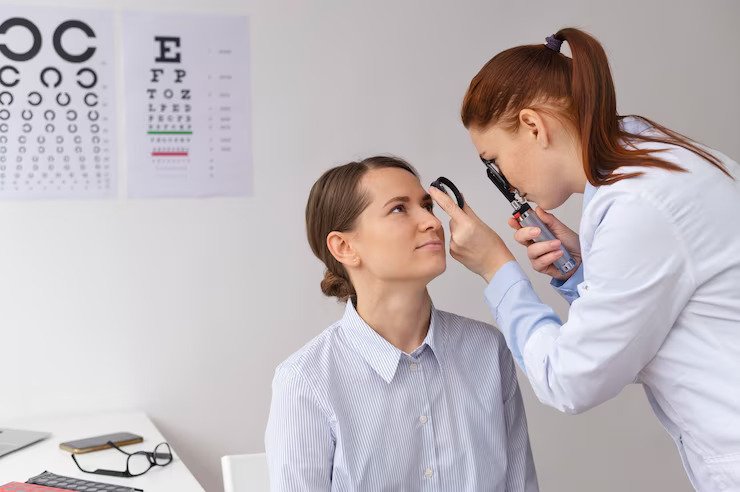5 Signs You Need To See An Eye Doctor
When you found out that, in general, people first get their glasses when they reach 40, you were confident that you’re still far from that age. Your eyes are still good, and you don’t have to worry about it.
But in today’s modern world, where people are always on their digital devices, eye strain can be a common problem. Admit it or not, you even bring your phone with you on the bed, and sometimes you even fall asleep holding it. Don’t worry. You’re not alone. According to one survey in 2011, about four in ten Americans between the ages of 13-29 bring their cell phones into bed. Because of this, eye problems persist.
But when do you see your doctor? This post will explore the five signs you need to visit your optometrist. If you’re looking for a reliable one, check out Clearly Eye Care – Eye Doctor in Round Rock, Texas.
Checkout Five Important Signs You Need To See An Eye Doctor

Now here are the five signs to tell you that you must see your eye doctor:
1. Changes In Vision
This is the easiest way to tell you to see your eye doctor. Your once very clear vision might turn blurry, or your eyes may have difficulty focusing on an object. You must see a doctor if you feel there’s no change after resting your eyes.
Vision changes are relatively normal if your eyes tire from staring at a screen longer than usual. This is called computer vision syndrome or digital eye strain. This is a common problem for the people of the 21st century.
This usually happens because of the following:
- Staring at a screen for extended periods without taking breaks
- Poor lighting
- Strong screen glare
- Improper viewing distances
To prevent computer vision syndrome from happening, it’s recommended that you:
- Take breaks at least every 20 minutes
- Adjust your screen to a comfortable viewing distance and angle
- Blink more often to reduce dryness and irritation
- Use OTC eye drops to lubricate your eyes
- Use special computer glasses to block blue light and reduce eye strain.
Even after following the tips to prevent digital eye strain from happening and you still have changes in your vision, you must see an eye doctor.
2. Headaches
Another common symptom related to eye problems is a headache. Although eye problems can cause different types of headaches, one of the most common headaches people with eye strain feel is pain around the eyes, temples, and forehead. This is because the trigeminal nerve’s ophthalmic branch, which is responsible for transmitting signals to the brain, may be affected.
However, the headache may also be a symptom of an underlying medical condition such as glaucoma or optic neuritis. That’s why you must see a doctor immediately to address this.
Glaucoma is the leading cause of blindness worldwide. It affects the optic nerve, which transmits signals from your eyes to the brain. It usually begins with peripheral vision loss and quickly progresses over time.
An eye exam can immediately assess this condition. And the soonest you go to your doctor, the fastest an intervention can be implemented to prevent further damage to the optic nerve.
3. Eye Fatigue Or Strain
Eye fatigue or strain can manifest in dry eyes, the feeling of heaviness in the eyes, and itchiness. This is also related to computer vision syndrome. However, it can also be related to astigmatism. Astigmatism occurs because the cornea or lens of the eyes becomes irregularly shaped, causing distorted and blurred vision.
The cornea becomes irregularly shaped because of the following reasons:
- Genetics: It can run in the family and may be inherited
- Eye Injuries: When the eye suffers trauma, the cornea can get misshapen
- Corneal disease: Keratoconus, a corneal disease, can cause the cornea to become thin and bulge outwards.
- Eye surgery: A side effect of some eye surgeries like LASIK or cataract surgery is astigmatism.
- Aging: Your cornea gets misshapen as you age, especially if you don’t care about your eyes well.
Eye strain can cause your vision to suffer, leading to difficulty accomplishing tasks. It’s best to address this earlier so you correct your vision.
4. Flashes Of Lights Or Floaters
If you see tiny dark specks floating across your field of vision or streaks or arcs of light in one or both of your eyes when you stare at a light-colored background in low-light conditions, it can be a sign of a retinal tear or detachment.
This is a normal part of the aging process, but if you’re young and you experience this, it requires prompt medical attention. Other eye conditions that cause light or floaters include uveitis, vitreous hemorrhage, and certain eye tumors. It’s essential to see your eye doctor know the best treatment options for you.
5. Sensitivity To Light
Sensitivity to light, also known as photophobia, maybe a normal response to bright light sources. But when accompanied by headaches, it could be a sign of an underlying health condition, including corneal abrasions, uveitis, cataracts, migraines, traumatic brain injury, or bacterial and viral infections.
Temporarily wearing polarized glasses may relieve you of your sensitivity to light. If it persists and becomes severe, prompt medical attention from an eye doctor is needed. A comprehensive eye exam will help identify what causes this, and your doctor will recommend a suitable treatment option.
Other Signs You May Need To Look Out For

Aside from those five signs, you may also check if you have trouble seeing at night, which could be a sign, you’re lacking vitamin A. If you also have difficulty seeing all types of color, a condition called color blindness can affect specific vital tasks like driving.
Also, suppose you’ve been diagnosed with diabetes. In that case, you must regularly visit an eye doctor because the illness can progress to diabetic retinopathy, resulting in vision loss when left untreated.
When To Visit Your Doctor?
Regular eye checkups are needed to maintain the health of your eyes.
The general guidelines are:
- Children – First eye exam at around six months, next at three years old, and before starting first grade.
- For healthy adults – At least once every two years
- Seniors – At least annually
These are just general guidelines. Your eye doctor may recommend more frequent visits, especially if you have a medical condition like diabetes, to monitor your vision correctly.
Conclusion
Your vision is one of the most critical senses that you have. Any changes that you feel must be taken seriously and addressed promptly.
The signs this post shared are just a few things you may need to check. Regular visits to an eye doctor are a must if you want your clear vision to be with you as you age. So, prioritize your eye health and visit your doctor today!
Read Also:
- Chronic Illness: 8 Steps To Choose The Right Doctor
- Questions to Ask Your Doctor After Getting a Prescription
- 3 Doctor’s Best Multi Vitamin Options to Choose From (Gummy Edition)



